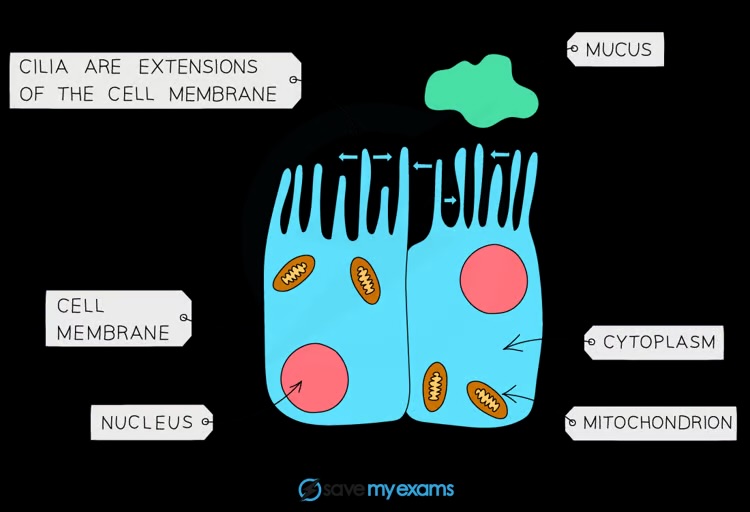unit 11 bio - Gas exchange in humans
1/9
There's no tags or description
Looks like no tags are added yet.
Name | Mastery | Learn | Test | Matching | Spaced |
|---|
No study sessions yet.
10 Terms
What are the features of gas exchange surfaces in humans?
Large surface area, thin surface, good blood supply, and good ventilation with air
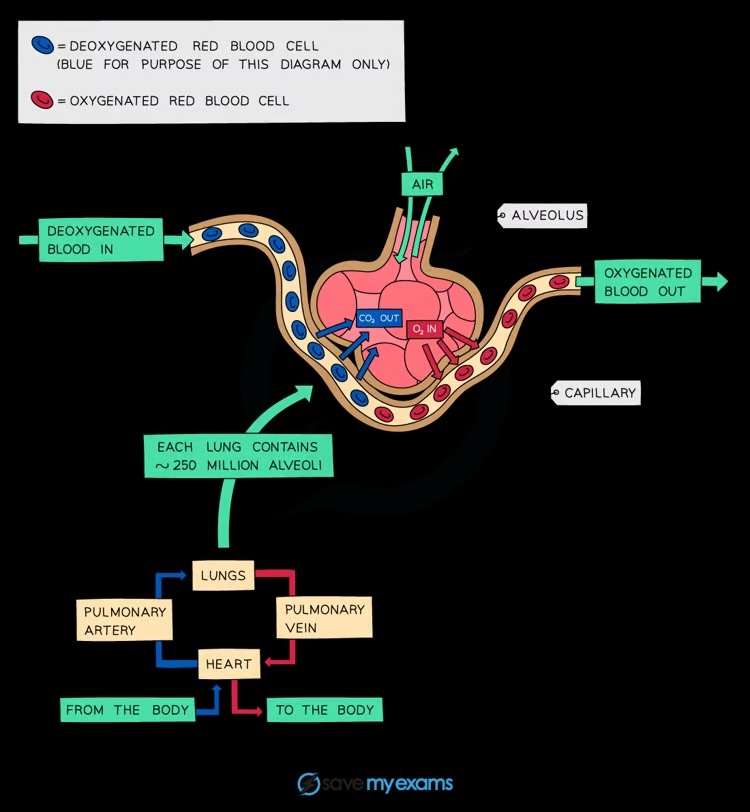
Can you identify parts of the breathing system in diagrams/images?
Lungs, diaphragm, ribs, intercostal muscles, larynx, trachea, bronchi, bronchioles, alveoli, and associated capillaries
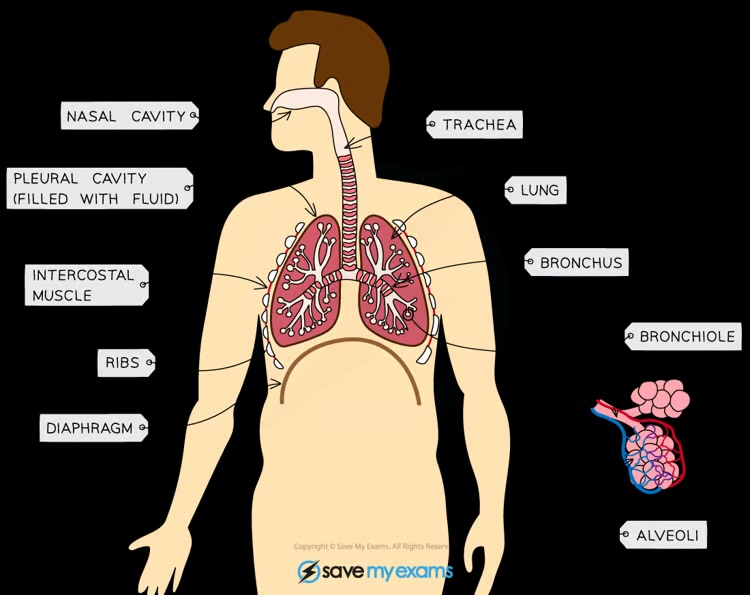
What is the role of cartilage in the trachea?
Keeps the airway open and prevents collapse
What muscles are involved in breathing?
Internal and external intercostal muscles
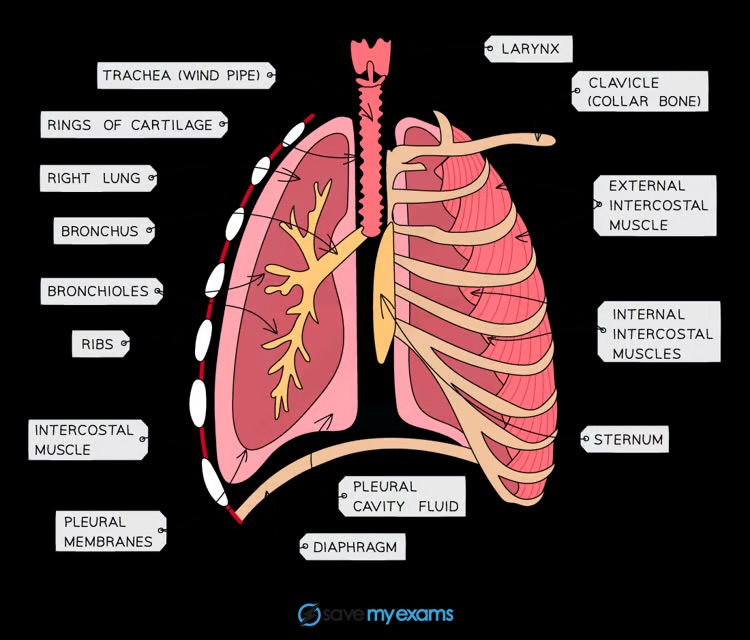
How do ribs, intercostal muscles and diaphragm help in ventilation?
They change the volume and pressure in the thorax to draw air in and out of the lungs
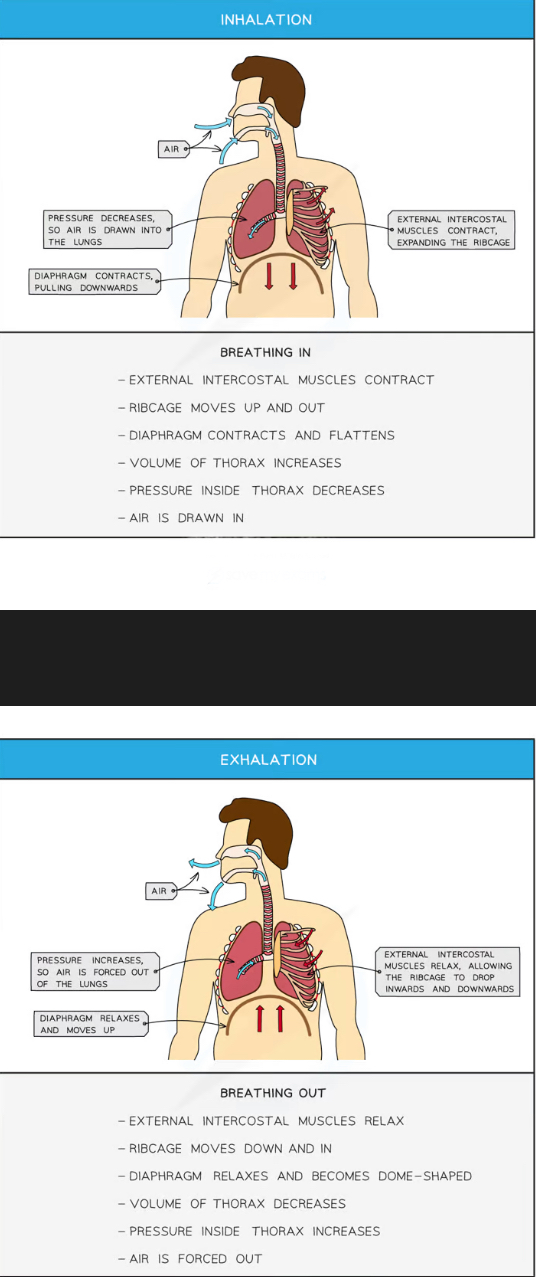
What are the differences in inspired and expired air?
Inspired air has more oxygen and less carbon dioxide and water vapour than expired air
How can we investigate differences between inspired and expired air?
Use limewater to test for carbon dioxide (limewater turns cloudy with CO₂)
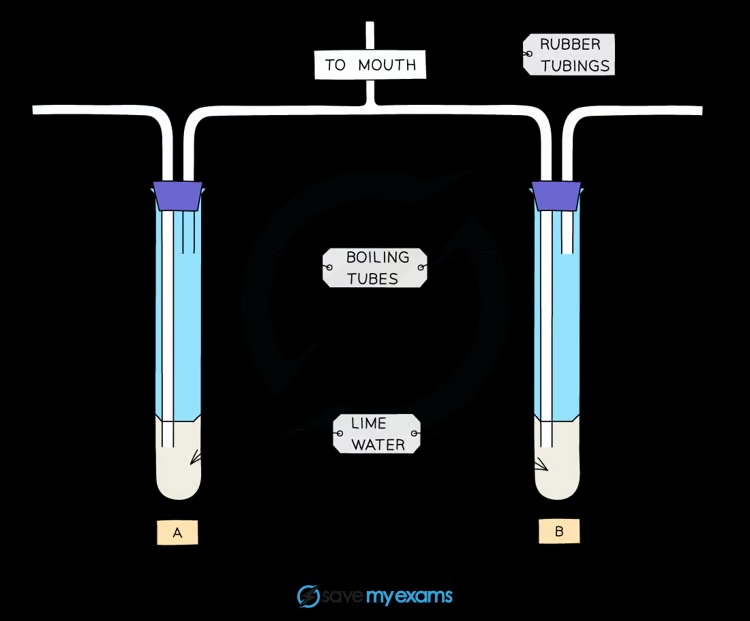
What effect does exercise have on breathing?
Increases breathing rate and depth
Why does physical activity increase breathing rate?
Higher CO₂ levels in blood are detected by the brain, which signals deeper and faster breathing
How is the breathing system protected from pathogens and particles?
Goblet cells secrete mucus to trap particles, and ciliated cells move the mucus out of the airways
